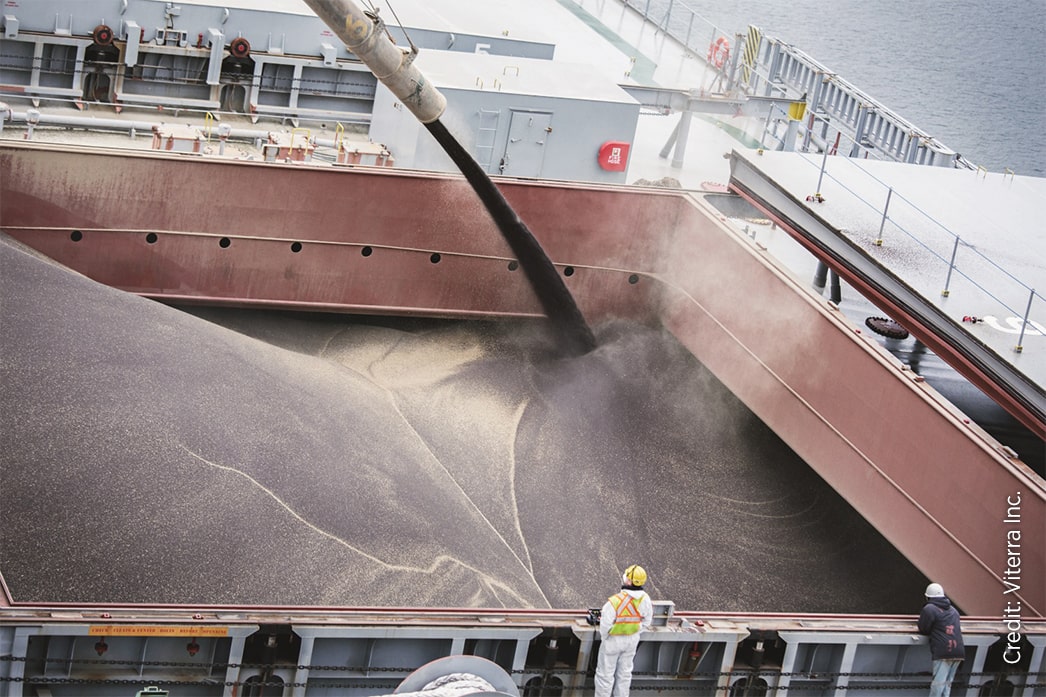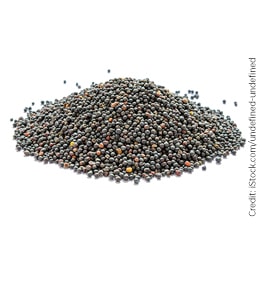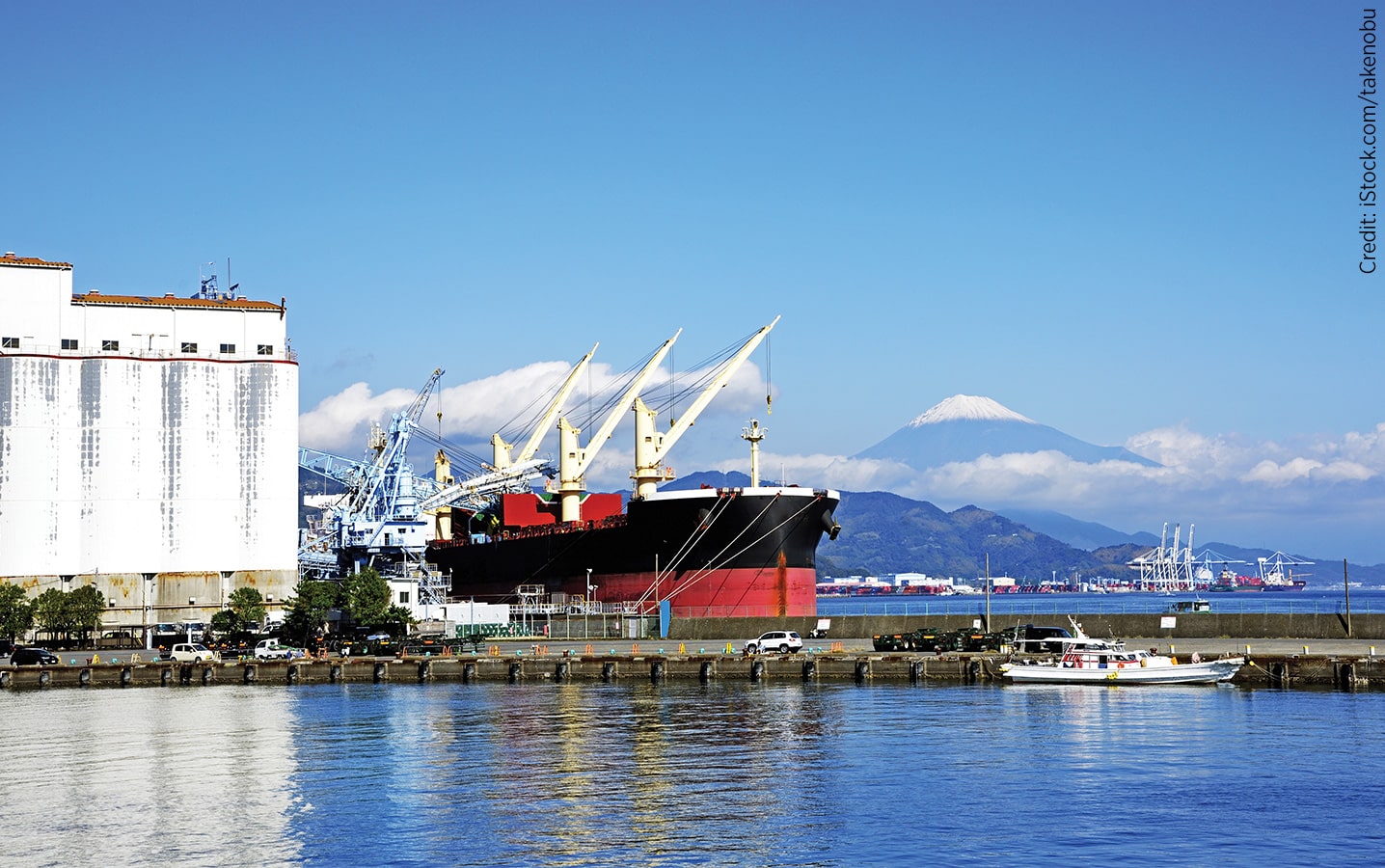Follow the Bushel
This article describes the two common pathways for canola from the Prairies: As seed on a ship to crushers outside Canada and as oil and meal from domestic crush plants. Viterra cooperated with details on the seed side. Cargill provided the oil and meal perspective. Here are the journeys for two bushels of canola as the travel these pathways to consumers.
SEED TO JAPAN
Peter Flengeris, corporate affairs lead with Viterra in Regina, gathered the details to track canola from a Viterra primary elevator to a processing facility in Japan.
- The primary elevator
As canola is delivered to primary elevators, representative samples of the delivery are obtained using a pneumatic truck probe. This sample is then reduced using an approved sample divider. This ensures the working sample remains representative of the original delivery. Following Canadian Grain Commission procedures, trained facility staff assess grade and dockage. Based on this assessment the canola is binned and payment issued to the producer. Composite samples of weekly canola deliveries are compiled and sent to Viterra’s head office Quality Control lab for additional laboratory tests. - The train to Vancouver
Railcars for export grain are booked on long-term freight contracts with penalties for both shipper and carrier for non-performance. At the time trains are being loaded, Viterra is shipping to Vancouver to make sure they have the tonnage in place to load multiple ocean-going vessels that are scheduled.Average loaded transit time to Vancouver is three to six days, depending on which part of Western Canada it is shipped from. Railcars generally cycle in 10 to 14 days.
All Viterra facilities have trained grain inspectors on site, but final quality is assessed upon loading the vessel. Multiple quality assessments are done throughout the supply chain.
- At the Vancouver port terminal
Trains are delivered to export terminals with all shipped information downloaded to the terminal, including quality and attributes such as protein and moisture. The load from each railcar is assessed and segregated according to its quality specification. Grain that requires commercial cleaning goes straight from railcar to cleaner prior to going to storage. (For more details on canola handling at the Port of Vancouver, read “Port Authority” in the November 2018 Canola Digest.) - Inspection steps
Quality is assessed right from grower delivery through to vessel loading. This helps to make sure supply channels can meet contract specifications for all sales. Viterra works with SGS, a private firm, or the Canadian Grain Commission on all outbound vessels as vessels are loading. - The ship
The party booking a vessel is known as the “charterer.” Through the ocean freight market, charterers search for a vessel that meets their parameters. This includes but is not limited to type and size of vessel, suitable dates, price and reliability of vessel owners. Brokers are commonly used to help charterers find a ship and negotiate terms.Under free-on-board (FOB) contract terms, the buyer arranges the freight. The party booking a vessel is known as the “charterer.” Through the ocean freight market, charterers search for a vessel that meets their parameters. This includes but is not limited to type and size of vessel, suitable dates, price and reliability of vessel owners. Brokers are commonly used to help charterers find a ship and negotiate terms. Under cost-and-freight (CFR) terms, the seller arranges it. Under usual international terms, the risk passes to the buyer once cargo is loaded onboard the vessel.
Usually shipments go to one buyer, but the ship may make delivery stops at more than one discharge port. Some shipments can be for multiple buyers.

- Arrival in Japan
Over 90 per cent of canola that arrives in Japan is delivered from port storage to processing plants directly via belt conveyor. The remaining imported canola is delivered from storage at discharging ports to processing plants by tanker trucks with capacities of 15 to 20 tonnes. The processor Kato receives canola via trans-shipment at Kobe into small 700-tonne barge-like vessels. Okamura and other small processors take canola in 20-foot containers, not bulk cargoes. - The Japanese processor
Japanese crushers follow a similar process as Canadian processing. Domestic consumers have been consistently satisfied with the quality of canola oil. - Oil delivery to consumers and end users
Japan’s top store brands are Nisshin Oillio and Ajinomo (Joil), with products labelled as ‘made with’ Canadian or Australian canola.Oillio and Joil are the top two dealers of canola oil into the Japanese market, with larger deliveries to food service companies done in 16-litre steel cans or trucks.
- The meal
Canola meal is mainly used for dairy cows, swine and poultry. Canola meal is delivered via truck, without pelleting, into compound feed mills. - Customer feedback
Viterra evaluates customer satisfaction annually with its end users in Japan and all other countries.
 The party booking a vessel is known as the “charterer.” Through the ocean freight market, charterers search for a vessel that meets their parameters. This includes but is not limited to type and size of vessel, suitable dates, price and reliability of vessel owners. Brokers are ommonly used to help charterers find a ship and negotiate terms.
The party booking a vessel is known as the “charterer.” Through the ocean freight market, charterers search for a vessel that meets their parameters. This includes but is not limited to type and size of vessel, suitable dates, price and reliability of vessel owners. Brokers are ommonly used to help charterers find a ship and negotiate terms.| Total | 2,141,703 | 195,551 | 94 | 2,337,348 |
| Arrival port | Imports from Canada (tonnes) | Imports from Australia (tonnes) | Other | Total Imports (tonnes) |
|---|---|---|---|---|
| Yokohama | 331,636 | 35,831 | 20 | 367,487 |
| Nagoya | 336,587 | 26,453 | 55 | 363,095 |
| Mizushima | 96,798 | 20,823 | 0 | 117,621 |
| Chiba | 245,208 | 10,452 | 0 | 255,660 |
| Shimizu | 211,637 | 6,959 | 0 | 218,596 |
| Kobe | 466,645 | 58,753 | 19 | 525,417 |
| Kashima | 221,596 | 0 | 0 | 221,596 |
| Yoikkaichi | 97,271 | 18,291 | 0 | 115,562 |
| Hakata | 126,180 | 11,006 | 0 | 137,186 |
| Osaka | 0 | 6,963 | 0 | 6,963 |
| Uno | 8,145 | 0 | 0 | 8,145 |
| Others | 0 | 20 | 0 | 20 |
OIL TO THE U.S.
Cargill shares the path canola takes from its processing facility at Clavet, Saskatchewan to end users in the United States, which is Canada’s largest market for canola oil and meal. Ken Stone, associate vice president and commercial manager for Cargill’s Canada Oilseeds Processing division, provides input on the oil pathway. Shannon Borden, regional sales manager for Cargill Animal Nutrition, provides input on the meal pathway.
Quality management at Cargill includes extensive analytics and inspection to monitor processing, provide end-to-end supply chain oversight, and farm-to-customer supply chain oversight.
- Canola delivery to Clavet
Cargill Clavet unloads up to 200 trucks per day, 5.5 days per week, which works out to around 5,500 acres of canola per day. Semis haul, on average, about 40 tonnes of canola. Once the canola is unloaded, the first step is grading and assessing for damage, moisture or quality issues. Then canola is processed into oil and meal. - Oil delivery
The Clavet processing facility will deliver crude oil or refined oil, whatever the customer wants. Crude oil leaves the Clavet processing plant in rail tanker cars for further processing. Crude oil is the result of the crushing process – it is dark coloured and not palatable. Clavet will also refine the oil through further processing to produce a light oil that is edible and neutral in taste. Refined oil goes out via rail or truck. Oil goes from Clavet direct to various well-known food companies, including companies that bottle branded oil for store shelves and popular chain restaurants. - Inspection steps
Quality management at Cargill includes extensive analytics and inspection to monitor processing, provide end-to-end supply chain oversight and farm-to-customer supply chain oversight. - Customer feedback
“We align with our customers on analytic methodology and high quality controls with regular analysis throughout the process,” Stone says. - The meal
Cargill Animal Nutrition and the sectors of its business that touch the meal from Clavet follow these steps:- Nutritionists define the parameters needed to meet a certain nutrient profile that each customer demands. They then formulate an overall diet to achieve that profile. Canola meal is one of many ingredients used.
- Staff in procurement and purchasing review past usages of canola meal, and collaborate with the nutritionist to procure canola meal for each Cargill Animal Nutrition production facility where diets are formulated. Procurement/purchasing staff purchase canola meal from Clavet and work with transportation to receive the meal into the mill.
- The mill manager and production team receive the meal into their plant and add it to the mixer to create the mash, pellet or premix that the on-farm client needs to feed their production animals. Much of the canola meal from Clavet is shipped by truck or rail car throughout North America and offshore.
- Meal users
Canola meal can be used in all stages of production for swine, beef cattle and poultry and is also commonly used in fish feed.“When used in dairy rations, canola meal can increase milk production by one litre of milk, per cow, per day,” Borden says.





